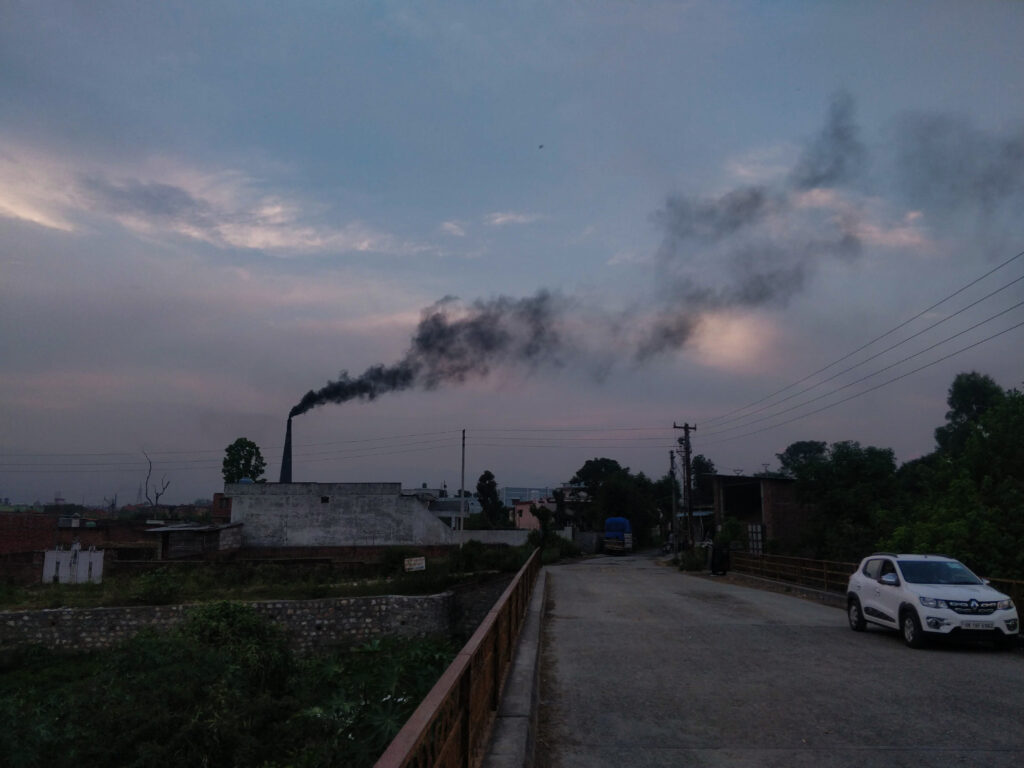Within eight days of last year’s country-wide COVID-19 lockdown, Air Quality Indices (AQI) of five cities in the National Capital Region improved to “satisfactory” category from “poor to moderate”, according to a new study. Ghaziabad reported the maximum reduction in AQI followed by Delhi, Gurugram, Noida and Faridabad. The study is important because while other studies that investigated the effect of lockdown on air pollution are “fragmented” and explore only a few pollutants, this study attempts to investigate effects on ten different pollutants.

The study titled, ‘Comprehensive Study on Impact Assessment of Lockdown on Overall Ambient Air Quality amid COVID-19 in Delhi and its NCR, India’ was conducted by researchers from Guru Gobind Singh Indraprastha University and Ministry of Science and Technology. The study focuses on five cities namely Delhi, Noida, Ghaziabad, Gurugram and Faridabad.
Notable reduction in pollutants level in the initial days of lockdown
According to the study, there was a significant decrease in the concentration of ten pollutants (PM10, PM2.5, NOx, NO, NO2, NH3, SO2, CO, C6H6, O3) due to several restrictive measures taken by the government during lockdown.
It has observed meteorological parameters- relative humidity, absolute temperature, wind speed and solar radiation from 17th March to 1st April, 2020 when they showed very little variations. The days were further sub divided into two categories- eight days before the lockdown and eight days after the lockdown.
Substantial reductions were seen in PM10 (52.92%-63.56%) and PM2.5 levels (57.28%-68.3%). This reduction owes to measures taken by the government during the lockdown which included termination of transportation and industrial activities.
The study also found that amongst nitrogen oxides, NO levels showed the highest reduction (up to 76.8%) at all locations except Noida. While Delhi observed the maximum reduction in NO, Noida observed the minimum.
Similarly, during the first eight days of the lockdown, significant reductions were observed in carbon monoxide (CO), benzene (C6H6) and ammonia (NH3) levels. Ozone (O3) levels showed reductions during the initial days of the lockdown at all locations except Faridabad, where it increased by 1.67%.
Extended period of research shows high ozone levels
Low reductions in the air pollutants level were observed during the extended period of the research between 1st March to 1st May 2020 as compared to the initial eight days of the lockdown. The study compared the average level of air pollutants before 24 days and after 24 days of the lockdown.
According to the study, while PM10, PM2.5, NOx, NO, NO2, NH3, SO2, CO, C6H6 showed reductions across the two-month period, O3 and SO2 levels showed an increase. The rise in the O3 level owes to its dependency on NOx. With the increase in temperature and solar radiations, nitrogen oxides react with oxidizing agents and results in the formation of ozone.
It noted that the mean ambient temperature of the Delhi NCR region varied from 23.81 degree Celsius to 28.37 degree Celsius. Unlike in initial analyses, events like rainfall and dust storms which affect pollution levels, along with variations in relative humidity and solar radiations, were also included in the extended research. While the rainfall resulted in a sharp decline in the PM10 and PM2.5 levels, a dust storm resulted in a sudden increase in air pollutants in Delhi NCR regions.
Air Quality trend analysis from 2015-2020
The study also examined the pollutant trends of the NCR regions from 1st January-30th November for the years 2015-2020. It compared the average concentration of all pollutants (PM2.5, NO2, SO2, CO, O3 and benzene) for the year 2015-2019 with 2020- the lockdown year.
According to the trend analysis the concentration of PM2.5, NO2, SO2, CO, O3 and C6H6 were decreased with particulate matter showing the highest reduction (42%).
Authors advocate proper implementation of regulations, norms and standards to maintain ambient air quality in the region, noting that the strict control measures in place during the first phase of the lockdown were critical in achieving the observed improvements.
About The Author
You may also like
Hyperlocal air quality monitoring identifies pollution hotspots in Indian cities: Study
Meat, dairy industry surpasses fossil fuels in methane emissions: Report
Delhi-NCR most polluted region in India, Karnataka the cleanest air in India: Report
Outdoor air quality chronically underfunded, finds State of Global Air report
PM2.5 shortening average life expectancy of Delhi residents by almost 12 years


